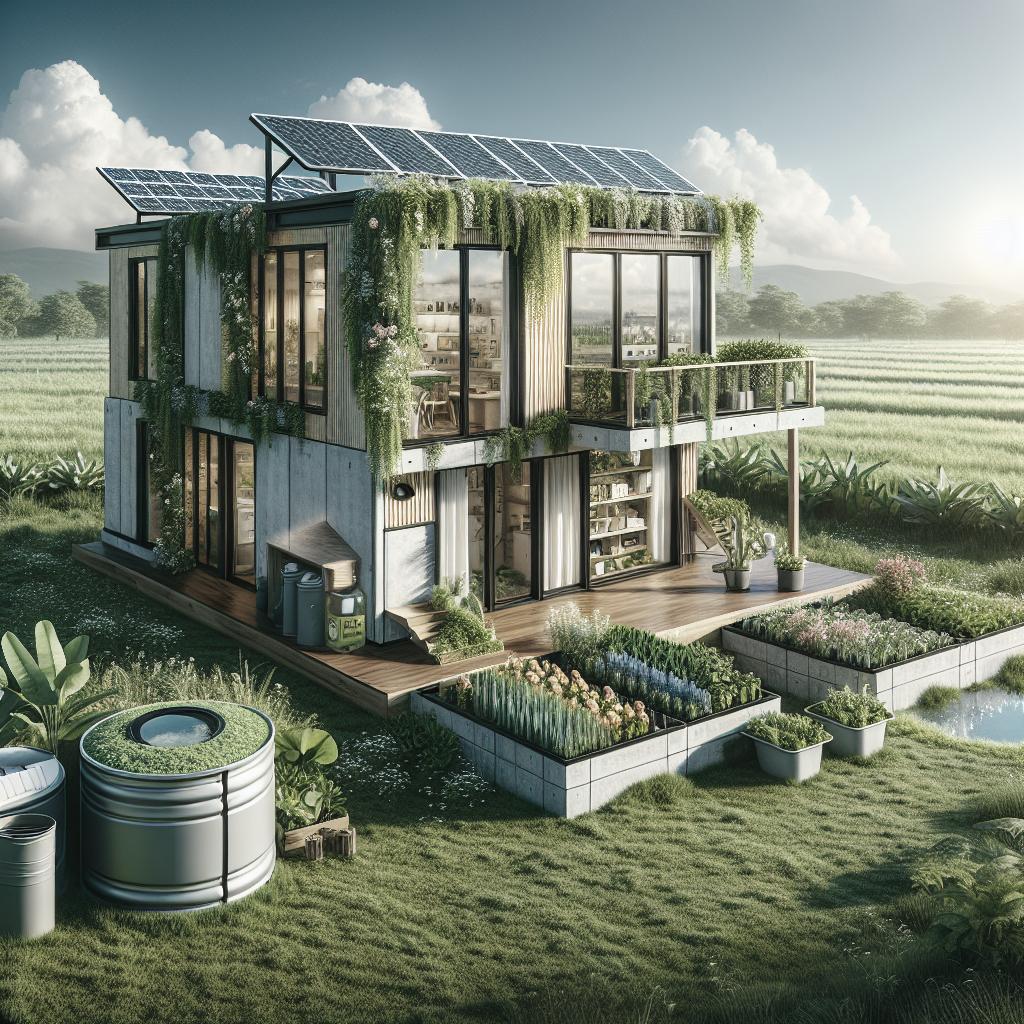“`html
Innovations in Prefab Sustainable Homes
Prefab homes are paving the way for the future of sustainable living. As the demand for eco-friendly housing grows, these factory-built residences are emerging as a practical and innovative solution. This article explores the advancements in prefab sustainable homes, encompassing resilient construction, energy efficiency, self-powered capabilities, and enhanced living conditions. By envisioning what the future holds, we delve into the details of how these homes integrate sustainability without sacrificing comfort or style.
VISION House Transcend’s high-performance, sustainable design offers a glimpse of the future of homebuilding.
The VISION House Transcend represents a groundbreaking approach to sustainable home design. By incorporating cutting-edge architecture and eco-friendly materials, these homes set a new standard for environmental responsibility. This design prioritizes reduced carbon footprints and enhanced energy conservation, aiming to minimize the overall impact on the environment.
Beyond the materials, VISION House Transcend focuses on the integration of technology and smart design. Thoughtful spatial planning maximizes natural light and air flow, reducing the reliance on artificial lighting and climate control. These homes are not only energy-efficient but also promote a lifestyle in synchrony with nature, innovation, and sustainability.
Factory-Built for Resilience and Efficiency
The factory-built concept in prefab homes emphasizes resilience and efficiency. By prefabricating components in a controlled environment, builders can ensure higher quality and precision in each structure. This method reduces the likelihood of errors and defects common in traditional construction.
Moreover, the efficiency of prefab construction extends beyond quality. The controlled setting allows for the reuse of materials, reduction of waste, and optimization of resources. It provides a streamlined process that cuts down on building time and onsite disturbances, making it a more sustainable choice in homebuilding.
Self-Powered Home
One of the standout features of modern prefab homes is their capability to operate as self-powered units. Through advancements in renewable energy technologies, these homes can generate, store, and manage their own energy. Solar panels, wind turbines, and efficient battery systems integrate seamlessly into these homes, significantly reducing their reliance on grid power.
Beyond just generation, the smart systems installed in these homes manage energy usage impeccably. Smart thermostats, energy-efficient appliances, and advanced insulation work in harmony to create a home that is not only self-sufficient but also cost-effective. This sustainable model provides homeowners with autonomy and financial savings while lessening their environmental impact.
Healthy Living in a Prefab Home
Prefab homes are designed with health in mind, ensuring that inhabitants live in a comfortable and safe environment. Indoor air quality is significantly enhanced by using non-toxic materials and advanced ventilation systems. Ingredients like formaldehyde and volatile organic compounds (VOCs) are minimized to create a healthier habitat.
The integration of biophilic design principles, which connect residents with the natural world, further promotes well-being. Large windows, indoor plants, and the use of natural materials create an environment conducive to both physical and mental health, underlining the importance of sustainability in everyday living.
Home Bells and Whistles
Modern prefab homes do not compromise on luxury or convenience. Innovations have incorporated the latest in smart home technology, allowing owners to control lighting, heating, security systems, and more, directly from their devices. These homes come equipped with state-of-the-art appliances, ensuring efficient and easy day-to-day living.
Exterior features have also been revolutionized, with eco-friendly landscaping and water management systems that complement the sustainable ethos of the home. Smart rainwater harvesting and irrigation systems ensure resource conservation is prioritized even in garden care.
By Michele Lerner, Associate Editor
Michele Lerner is an expert in sustainable architecture and building practices, contributing her knowledge and insights on eco-friendly living. Her work is dedicated to exploring the intersection of modern technology and sustainable homebuilding.
Also Read
For those interested in further exploring sustainable architecture and innovative home design, consider reading more about advances in smart home technologies and green living strategies that are shaping the future of residential architecture.
Lessons Learned
| Aspect | Key Innovations |
|---|---|
| Sustainable Design | Integration of eco-friendly materials and energy conservation techniques. |
| Resilience and Efficiency | Factory-based precision, reduced construction waste, and improved build quality. |
| Energy Independence | Self-powered systems with renewable energy sources and smart management. |
| Healthy Living | Use of non-toxic materials and biophilic design to enhance well-being. |
| Modern Amenities | Incorporation of smart technology for convenience and resource management. |
“`
